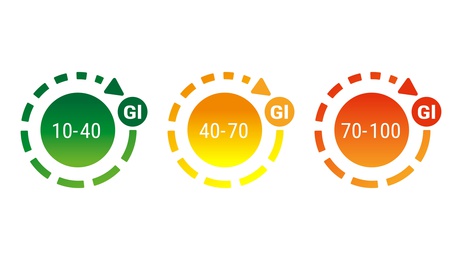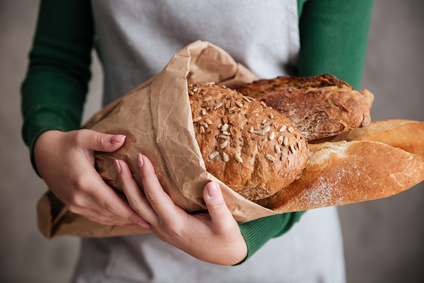Would you like to improve your child’s diet? Pay attention to the glycaemic index of the food you prepare. It is a simple solution for more healthy and nutritious eating.

The glycaemic index indicates how fast the blood glucose level is going to rise after eating a specific product. The basic value on the scale of that index is the rate at which pure glucose is absorbed (100). The index value of other products tells us how fast or slow we absorb the carbohydrates that they contain. For example, the index of strawberries is 25, which means that after eating them the blood glucose is going to rise 75% slower than in case of eating pure glucose with the same amount of carbohydrates.
How can we use this knowledge in practice?

For example, the rate of carbohydrate absorption has an impact on how much insulin is released into the blood. If the secretion of this hormone is too high, it leads to weight gain and hunger reappearing quicker. In opposite situation, low insulin release makes it possible to spend more energy in our body and feel satiated for a longer while. Thus, the lower the glycaemic index of meals, the better our children metabolize the food. This also allows them to eat less frequently.
The rate at which the carbohydrates are absorbed is affected not only by what product we eat, but also by how we prepare it and how we eat it. Let us examine it on the example of a carrot. Raw carrot has glycaemic index of 30. It is a very healthy value that should appear often in meals. Meanwhile, after cooking, the carrot has a high index of 80. That is why it is important to include a lot of fresh fruit and vegetables in children’s diet and to care for the products to be processed as little as possible. Overcooking potatoes, rice and pasta does not only result in them not being tasty – it also makes them unhealthy!
Another factor having a negative impact on absorption of carbohydrates is the rate at which we eat meals. The faster we eat, the worse it is for our bodies. Thus, it is a good idea to devote more time to eating together with children. Thanks to that both us and them are going to be more healthy, but another advantage is that we are having them develop a good habit for the future.
We already know why the glycaemic index is such an important issue. Now it is time to move to tables that show its values and take a closer look at them. They are available at many websites and in many books that deal with nutritious composition of meals. What is especially helpful here is the sources addressed to diabetic people, since the glycaemic index is indispensable in preparing the diet for people suffering from this disease. Very useful table is located here: http://www.health.harvard.edu/diseases-and-conditions/glycemic-index-and-glycemic-load-for-100-foods


In order to use the table it is enough to check the glycaemic index values of products that we use for preparing meal and comply with a few simple pieces of advice. We should avoid and eat only occasionally the products with index of more than 70. And when we do eat them it is a good idea to combine them with articles characterized by lower index values. Meanwhile, the products with index lower than 50 are those that are healthy to eat and it is them that we should focus on when planning meals.
To try it out, let us take a closer look at a few different types of bread. White bread has the index of about 95, wheat bread has 85 but rye bread has nearly 55. The best bread type turns out to be pumpernickel with index value of 40. Thus, the glycaemic index seems to indicate that it is worth switching to rye bread and including pumpernickel in diet, even if only sporadically.
The weight of the glycaemic index is underline to an increasingly greater extent. In Australia some food producers are already placing glycaemic index information on product packaging and the World Health Organization has appealed to make this a standard practice all over the world.


Next to reading the product ingredients list on packaging it is also worth remembering about the glycaemic index tables. Thanks to that our nutrition can become even more healthy.















